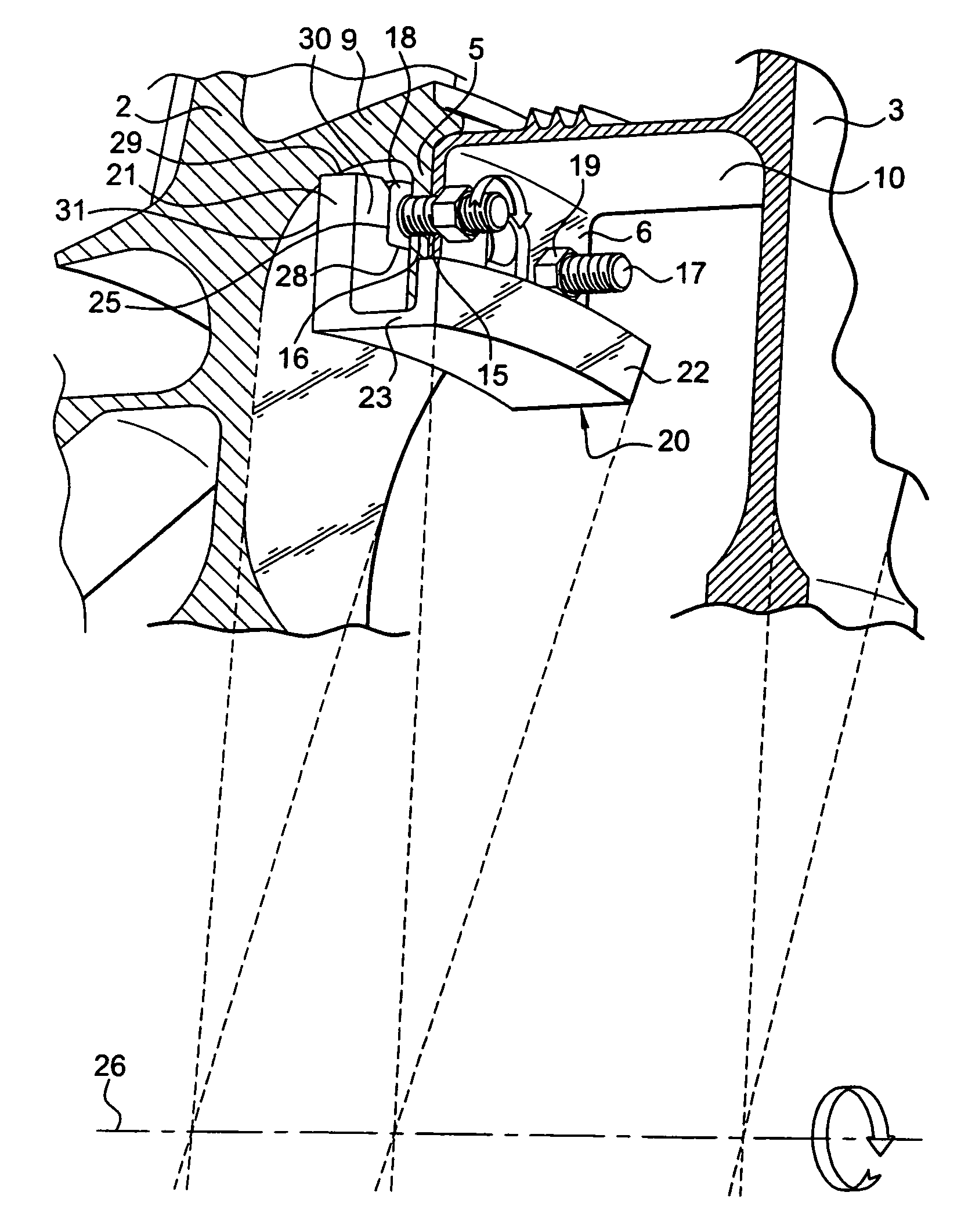Screw and nut fastening device
a technology of screw and nut, which is applied in the direction of threaded fasteners, screw, liquid fuel engines, etc., can solve the problems of difficulty in corresponding machining, high cost, and inability to provide torque opposing the tightening or loosening torque exerted on the nut by some appropriate tool, wrench or automatic, etc., and achieves the effect of effectively preventing the movement of the fastening screw. simple and inexpensiv
- Summary
- Abstract
- Description
- Claims
- Application Information
AI Technical Summary
Benefits of technology
Problems solved by technology
Method used
Image
Examples
Embodiment Construction
[0029]The device of the invention in this example is used to assemble together two annular parts 2 and 3 of a rotor of a turbocompressor. The first of these parts is a rotor disk 2 and the second is an annular part forming a spacer 3 and including in particular collars 4 for co-operating with stator vanes (not shown) so as to form a baffle seal. The two annular elements 2 and 3 are placed axially end to end and comprise respectively an annular flange 5 and flange-connection tabs 6 (see FIGS. 3 and 4) that extend radially inwards. A cylindrical wall 9 carrying the annular flange 5 extends from the rotor disk 2 around the axis 26 (FIG. 3), and a cylindrical wall 10 carrying the tabs 6 extends from the spacer part 3. Although FIGS. 1 to 4 show only an annular sector of the two annular parts 2, 3, the tabs 6 are regularly distributed around the entire radially inner periphery of the cylindrical wall 10. An annular rim 11 (FIGS. 1 and 4) is formed on the radially inner periphery 12 of th...
PUM
 Login to View More
Login to View More Abstract
Description
Claims
Application Information
 Login to View More
Login to View More - R&D
- Intellectual Property
- Life Sciences
- Materials
- Tech Scout
- Unparalleled Data Quality
- Higher Quality Content
- 60% Fewer Hallucinations
Browse by: Latest US Patents, China's latest patents, Technical Efficacy Thesaurus, Application Domain, Technology Topic, Popular Technical Reports.
© 2025 PatSnap. All rights reserved.Legal|Privacy policy|Modern Slavery Act Transparency Statement|Sitemap|About US| Contact US: help@patsnap.com



